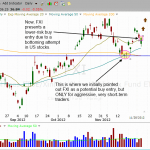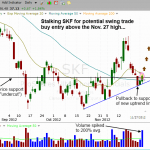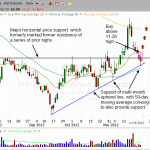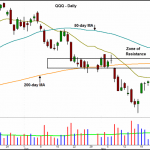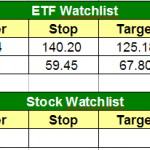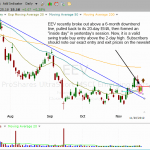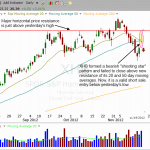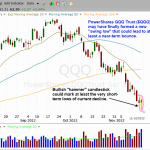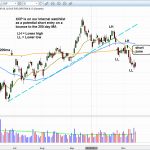Given yesterday’s bullish price action, it is important to determine whether or not total volume levels confirmed the bullish price action of the reversal day. Because turnover in the NYSE was indeed 2% greater than the previous day’s level, the S&P 500 (barely) registered an “accumulation day,” which was indicative of institutional buying. However, total volume in the Nasdaq actually receded 2%, preventing the tech-heavy index from scoring the same label of a bullish “accumulation day.”
